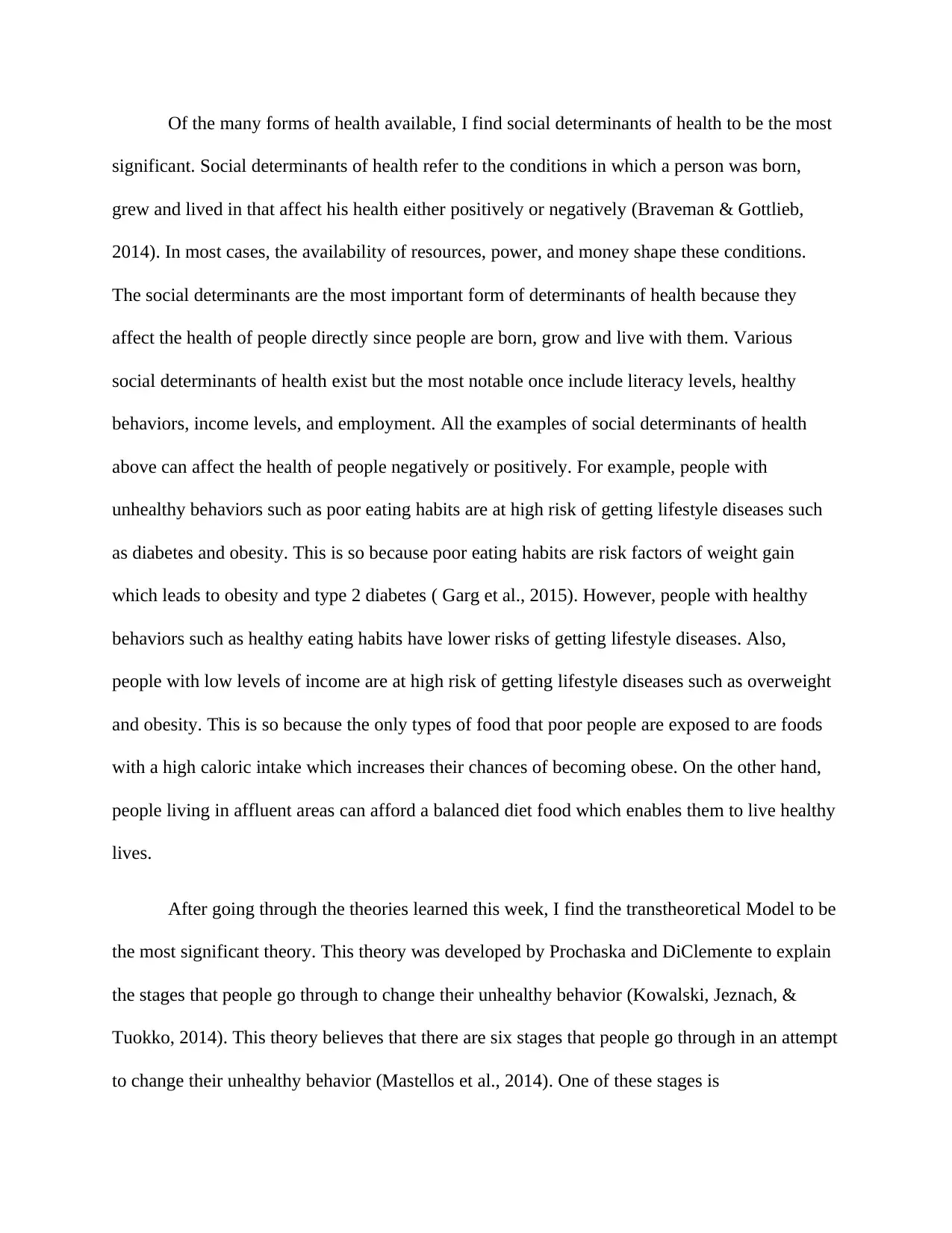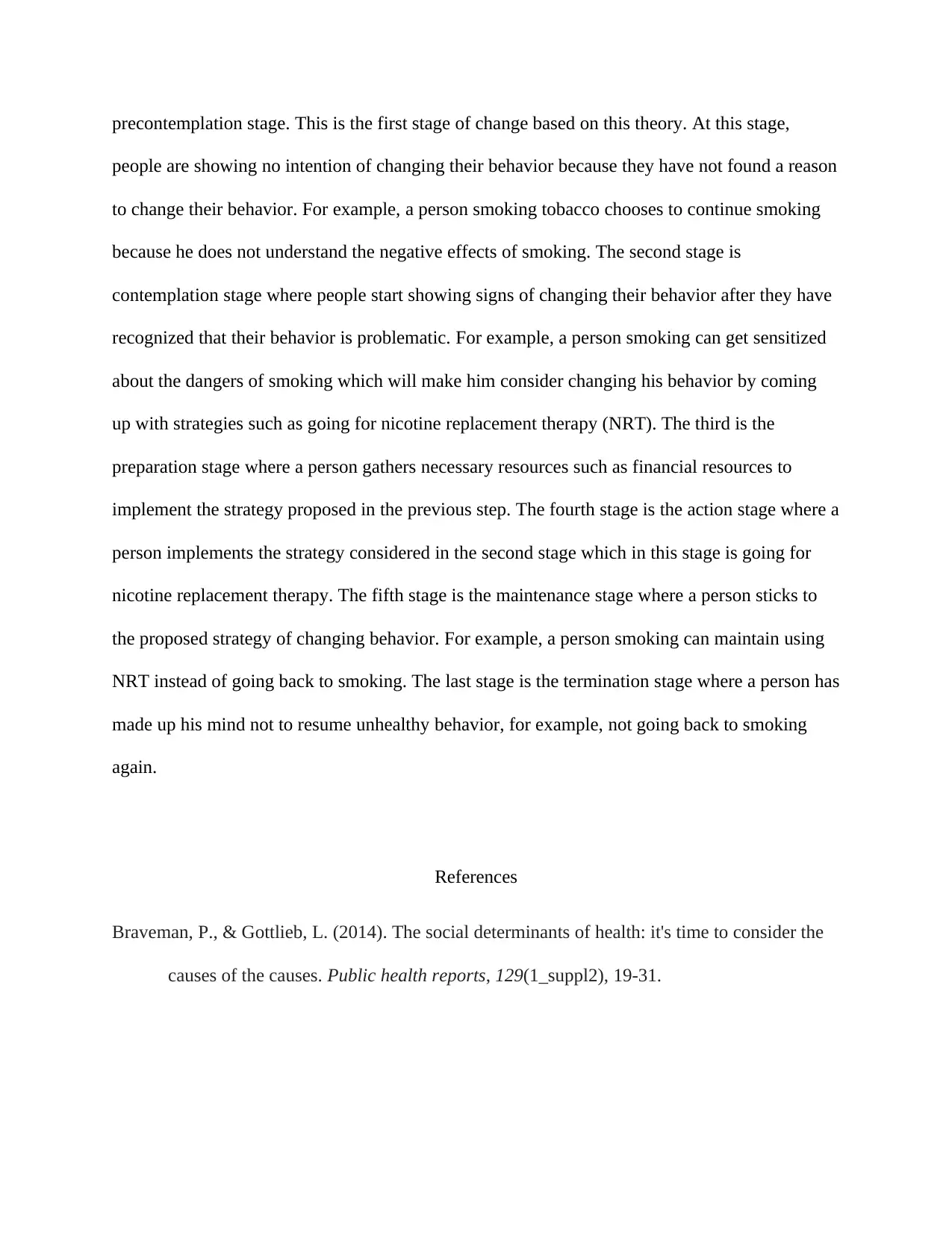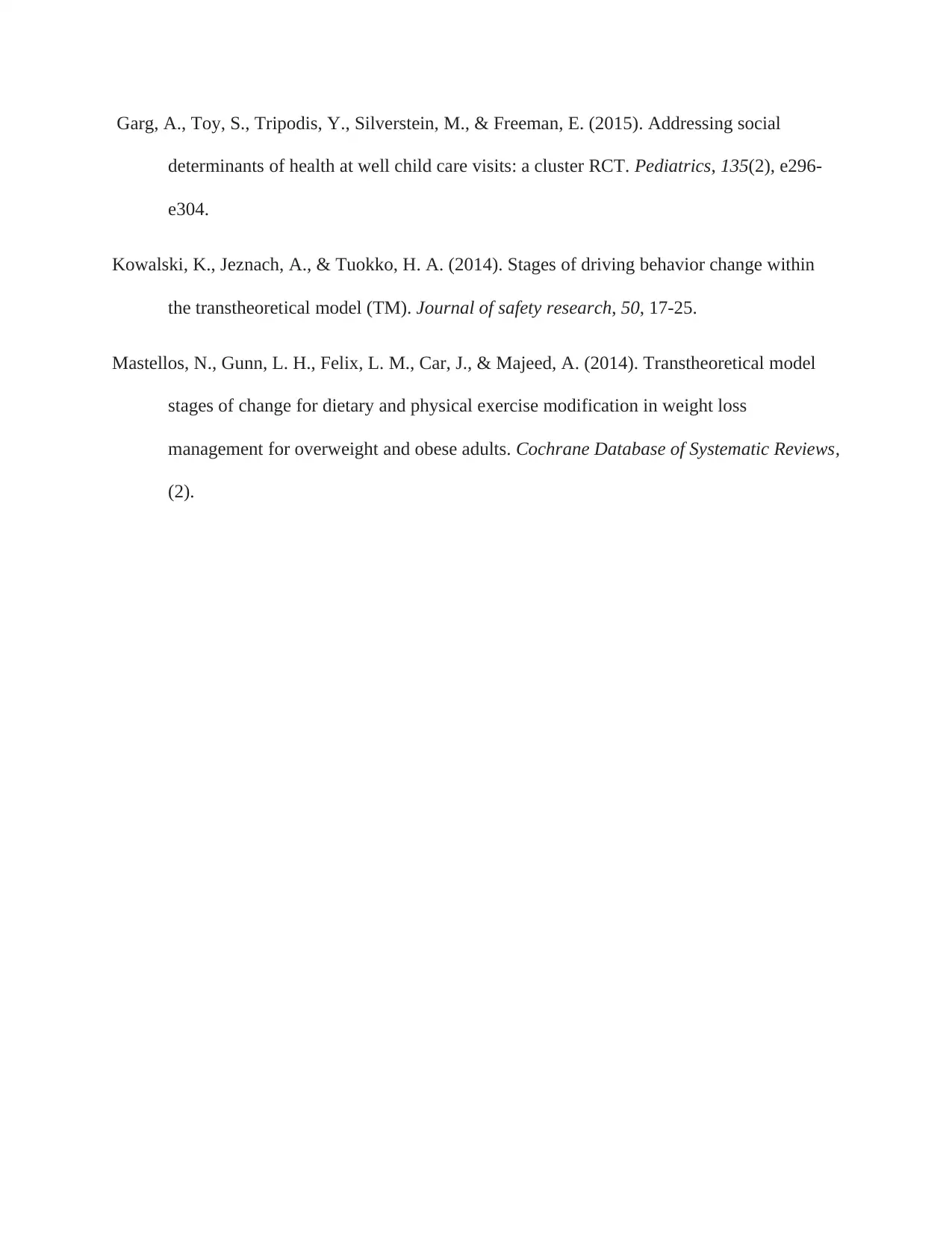Applying Theory to Practice: Health Behavior Assignment, Week 3
VerifiedAdded on 2022/10/13
|3
|816
|313
Homework Assignment
AI Summary
This assignment delves into the significance of social determinants of health, emphasizing their direct impact on individuals' well-being based on their birth, growth, and living conditions. It highlights key determinants like literacy, behaviors, income, and employment, illustrating how they can positively or negatively influence health outcomes. The assignment then focuses on the Transtheoretical Model (TTM), developed by Prochaska and DiClemente, which outlines the stages people go through when changing unhealthy behaviors. It describes the six stages of change: precontemplation, contemplation, preparation, action, maintenance, and termination, providing examples of how individuals progress through these stages to modify their behaviors. The assignment references studies supporting the relationship between social determinants, unhealthy behaviors, and lifestyle diseases, and explains how the TTM can be applied to promote health behavior change.
1 out of 3










![[object Object]](/_next/static/media/star-bottom.7253800d.svg)